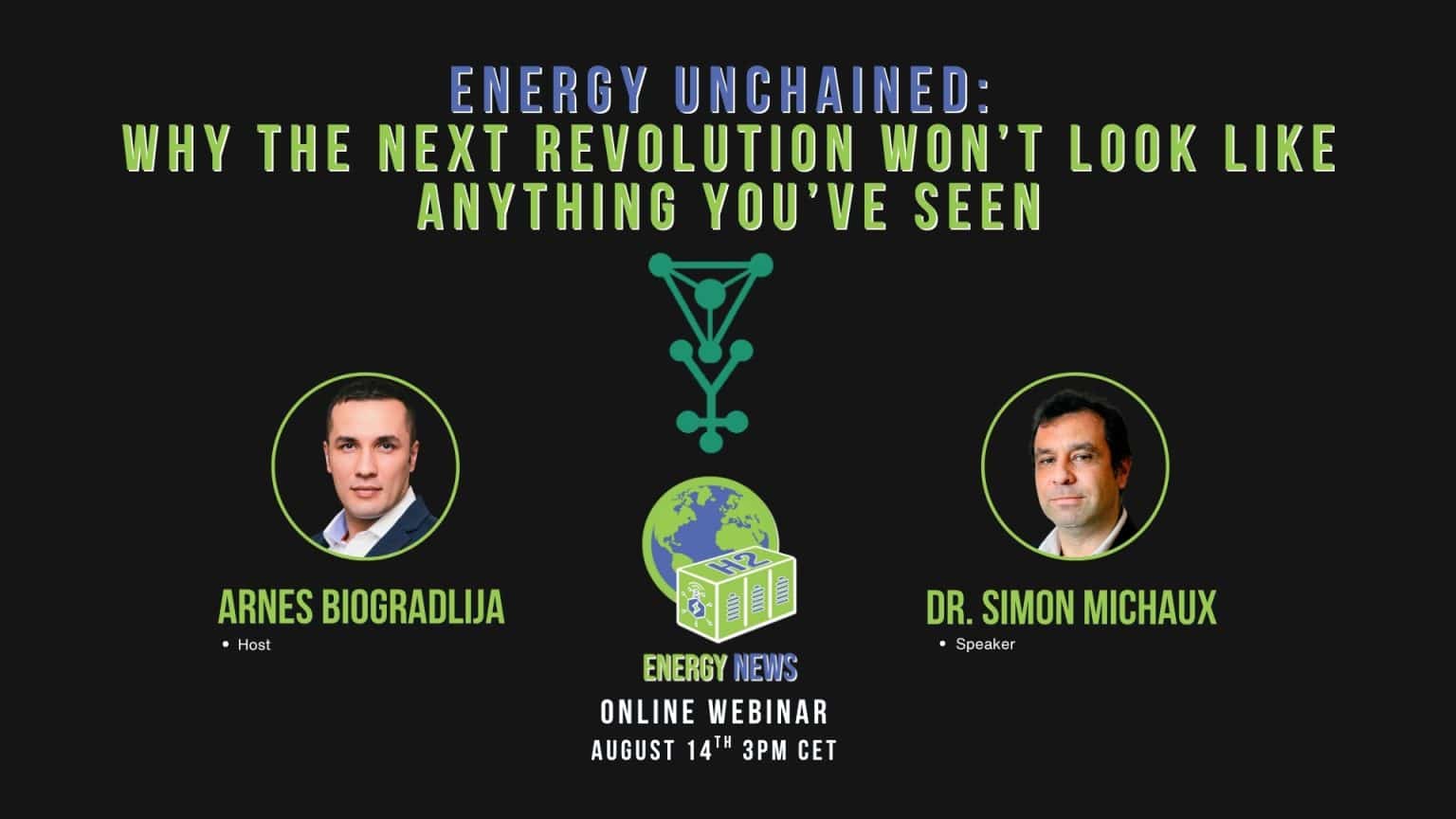Oil discoveries peaked in the 1960s, yet global production has persisted on a plateau since 2014. For every new barrel identified today, four to five are consumed. HSBC’s 2016 study warned that 81% of proven reserves are depleting at 5–15% annually, underscoring what geologist and energy strategist Simon Michaux calls the “after-oil imperative.” Waiting for depletion to arrive is not an option; the infrastructure required to replace fossil systems takes decades to build.
WATCH THE WEBINAR
Michaux’s analysis extends beyond oil. Natural gas discoveries peaked in the 1970s, with half of all gas ever extracted consumed in just the past 20 years. Coal remains abundant but increasingly low-grade, raising pollution and efficiency challenges. His central argument: fossil fuels will leave us before the energy system is prepared to replace them.
The proposed alternative—the so-called green transition—faces constraints of its own. Case studies from Colorado, Texas, and Spain highlight the fragility of grids dominated by variable renewables. In Spain and Portugal, a solar-induced frequency imbalance triggered a full blackout across two EU states in April 2025. In the U.S., multi-week wind lulls and storms that pushed two nuclear plants’ worth of chaotic power into the grid demonstrated that balancing weather-dependent supply within microseconds of demand remains unresolved. Even with aggressive buildouts, Michaux estimates that solar and wind would require seasonal storage buffers of 20–30 days, far beyond the conventional five-to-seven-hour frameworks used in planning.
The resource bottlenecks are equally daunting. A peer-reviewed study he cites compares the metals required for a full fossil phase-out against known reserves and resources. The shortfall is so vast that no plausible expansion of mining can close the gap. Nuclear, often positioned as the fallback, is limited by scale and speed. Michaux’s own simulation suggests that even with 25 new plants coming online annually, built in just five years each, the fleet would reach only 68% of global energy demand replacement by 2100—too late to avert the fossil decline.
Michaux instead outlines what he calls the “purple transition,” grounded in thorium-fueled small modular reactors (SMRs), non-lithium electric vehicles, recyclable iron powder combustion, pyrolyzed sewage for syngas, and ammonia engines for long-haul transport. Central to this vision are molten salt and pebble-bed thorium reactors, technologies already operating at small scale in China and advancing toward commercialization in Europe. Unlike conventional uranium reactors, thorium designs promise higher fuel utilization, orders-of-magnitude less waste, and the ability to recycle existing nuclear stockpiles. Copenhagen Atomics, for example, projects power at two cents per kilowatt-hour, with modular 40 MW units manufactured at scale.
The industrial backbone of Michaux’s proposal, branded “Vulcan Catalyst,” envisions siting such reactors alongside mining or industrial hubs under regulatory sandboxes, producing cheap electricity, desalinated water, and fuels from recycled inputs such as tires. This revenue would fund Prometheian Nexus, a pilot city and innovation hub designed to trial unorthodox energy, materials, and governance models. The long-term objective is a resource-balanced economy: decentralized, simplified, and designed for recycling rather than linear consumption.
The challenge is not technological availability alone but institutional willingness. As Michaux noted in a recent presentation to bankers in London, financial institutions already recognize the intermittency issues of solar and wind. Their instinct has been to return to gas-fired generation sets—a stopgap contradicted by his depletion data. Without investment into alternatives like thorium reactors, industry risks anchoring itself to fuels that are both finite and geopolitically volatile.
By scrutinizing both conventional and green pathways, Michaux situates the energy debate in uncomfortable territory: neither fossil continuity nor current renewable plans are likely to meet the scale, stability, and resource constraints ahead. His purple transition is less a utopian vision than a provocation to redesign the energy system from first principles, before depletion forces the issue.
Stay updated on the latest in energy! Follow us on LinkedIn, Facebook, and X for real-time news and insights. Don’t miss out on exclusive interviews and webinars—subscribe to our YouTube channel today! Join our community and be part of the conversation shaping the future of energy.





